Blue and white tiled churches, mosaic sidewalks, colorful apartments, bridges, hills, and port wine. This is Porto and it’s delightful.
Porto is the 2nd largest city in Portugal and was the capital before Lisbon. It was spared by the terrible 1755 earthquake that devastated Lisbon. Therefore, more historic buildings remain in the older districts. Porto is full of small winding streets, many with mosaic tiles (known as Portuguese pavement) creating the sidewalks. Layers of buildings and tall church bell towers rise up steadily on the hills climbing from the river.
Below I list some top sights to see and things to do. Then I discuss port wine, highlight some of the local cuisine you should check out, and end with a couple book recommendations to learn more about Portugal’s history.
See and Do:
Churches:
Only in Porto have I seen churches with outer walls covered in tiles. These blue and white tiles called Azulejos are ceramic tiles found not only inside and outside churches, but are also still used in houses, restaurants, and even the subway in Portugal. These tiles may be repeating patterns, but many create murals with elaborate scenes of angels, religious events, or communities. Listed below are three famous tiled churches you should see.
Ingrejo do Carmo has a stone front, but the side of the building is covered in these elaborate tiles. The Church of St. Ildefonso greets you with these tiles on the face of the building. The Chapel of Souls has tiles covering the front and sides. If you only have time for 1 or 2 tiled churches, I would recommend the Chapel of Souls or the Church of St. Ildefonso over the Ingrejo de Carmo.
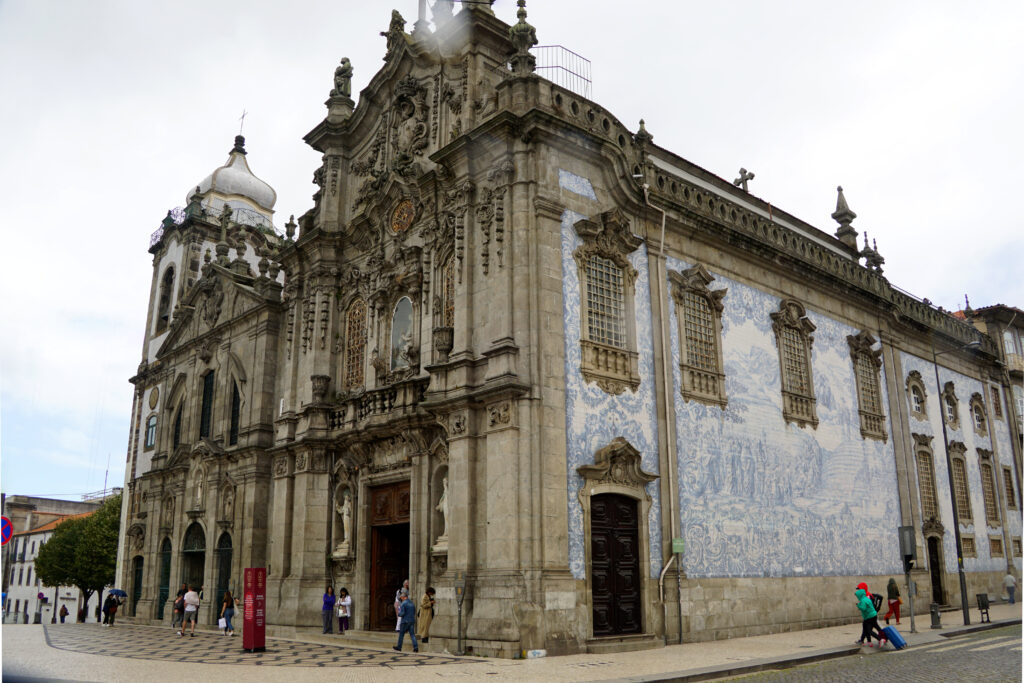
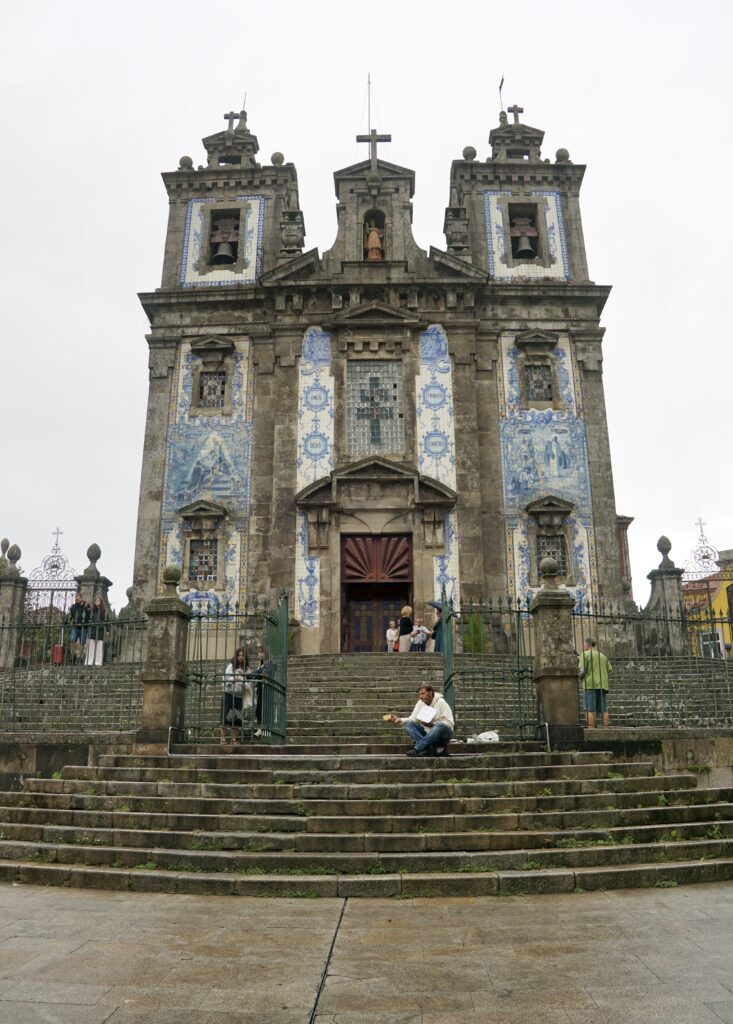
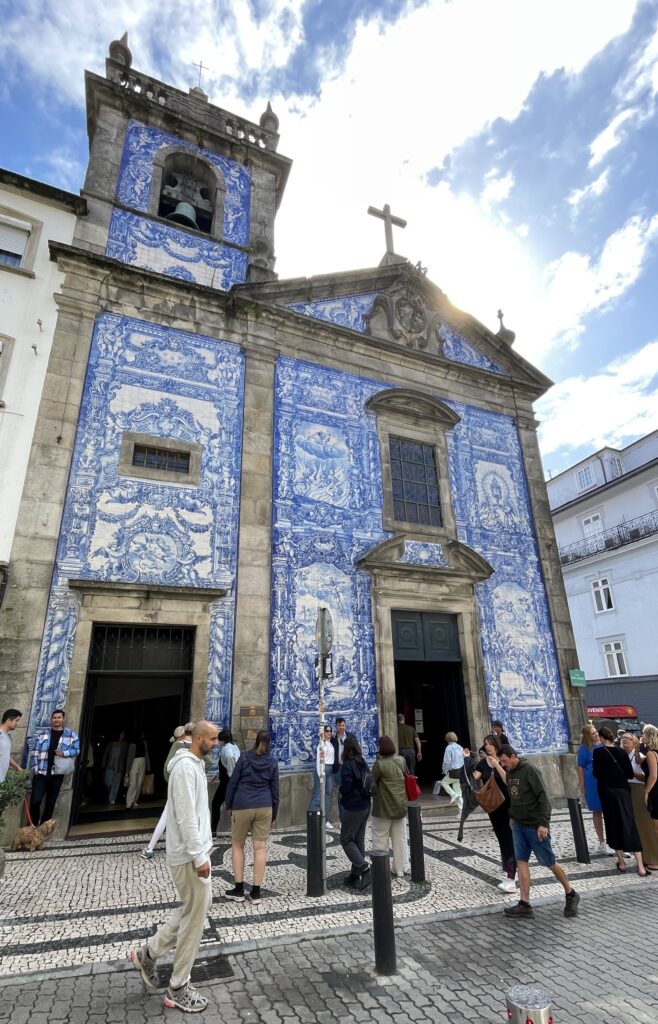
Two more churches make the sightseeing list even though they don’t have the Azulejos tiles on the outer walls.
The Church of St Francisco is the most elaborate church we saw in Porto. Practically the entire inside is baroque carved wood covered in dazzling gold leaf. The church was built in the 14th century in a plain gothic style and had elaborate alterations for centuries after. Entrance to the church also gains you entry into the catacombs.
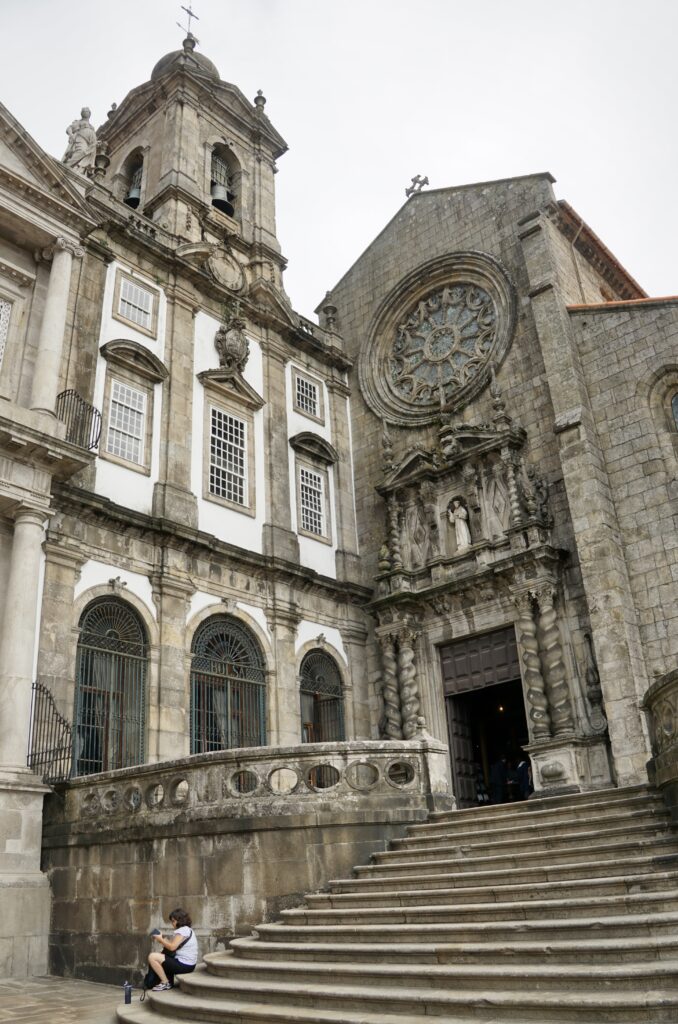
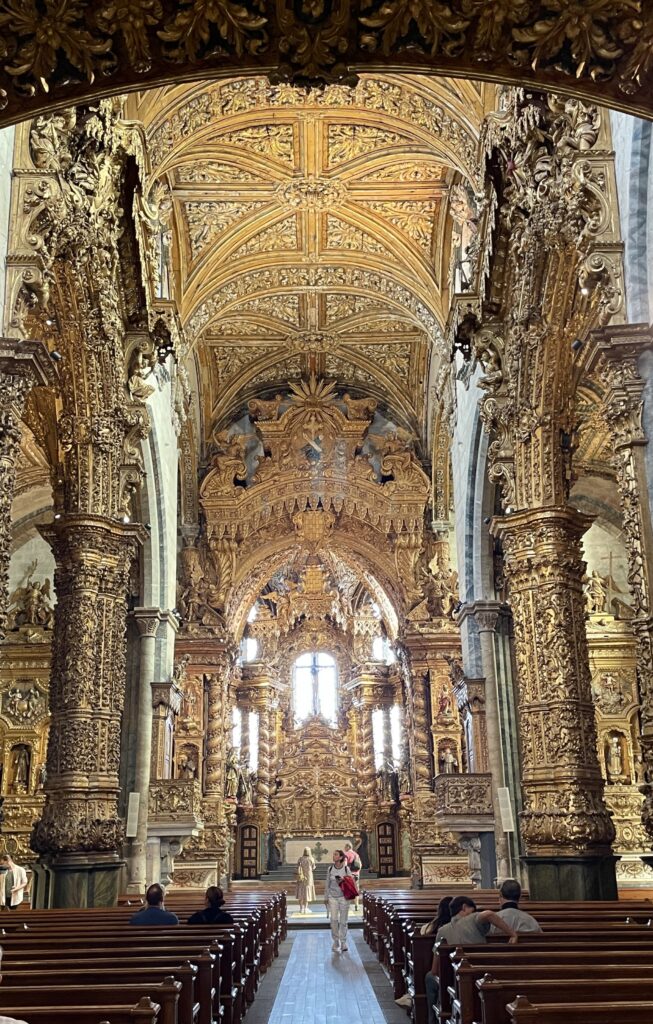
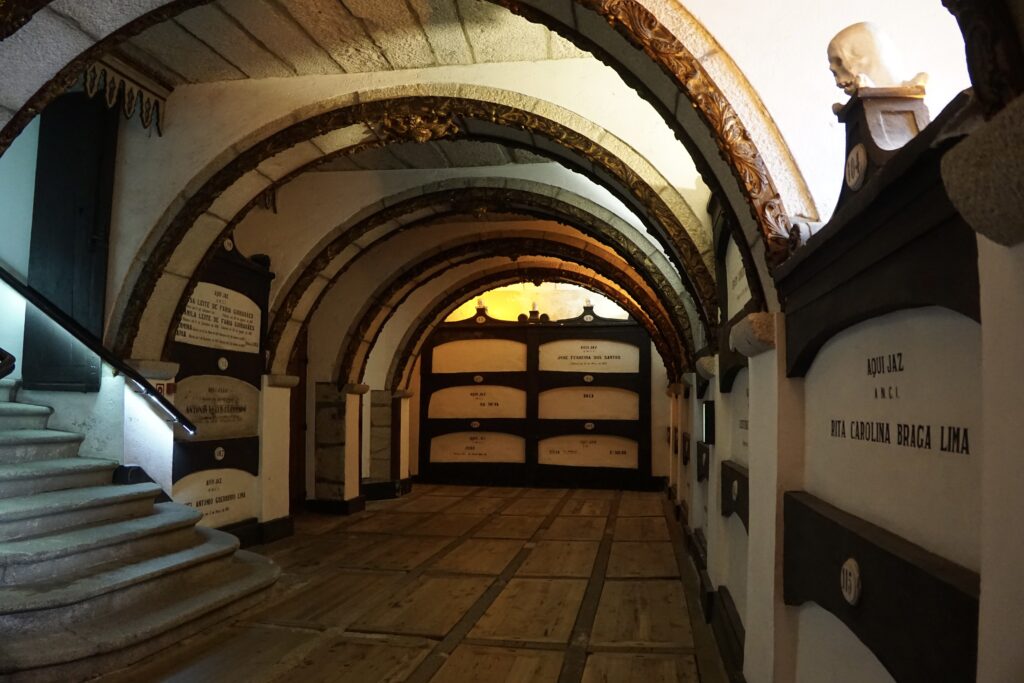
The Porto Cathedral and Bishop’s Palace are next to each other and a combo ticket is available. I found the Bishop’s Palace very interesting, so save time for both.
The giant stone Porto Cathedral sits upon one of the highest areas of Porto, with its bell towers visible from the river far below. This cathedral also has cloisters with gorgeous Azulejo tile covered walls to wander through. Rooms off-shooting from the cloisters include a few other small chapels, work rooms, and a display of religious clothing and items from the 17th – 19th century. Don’t miss the stairs up to the bell tower for a great view over Porto.
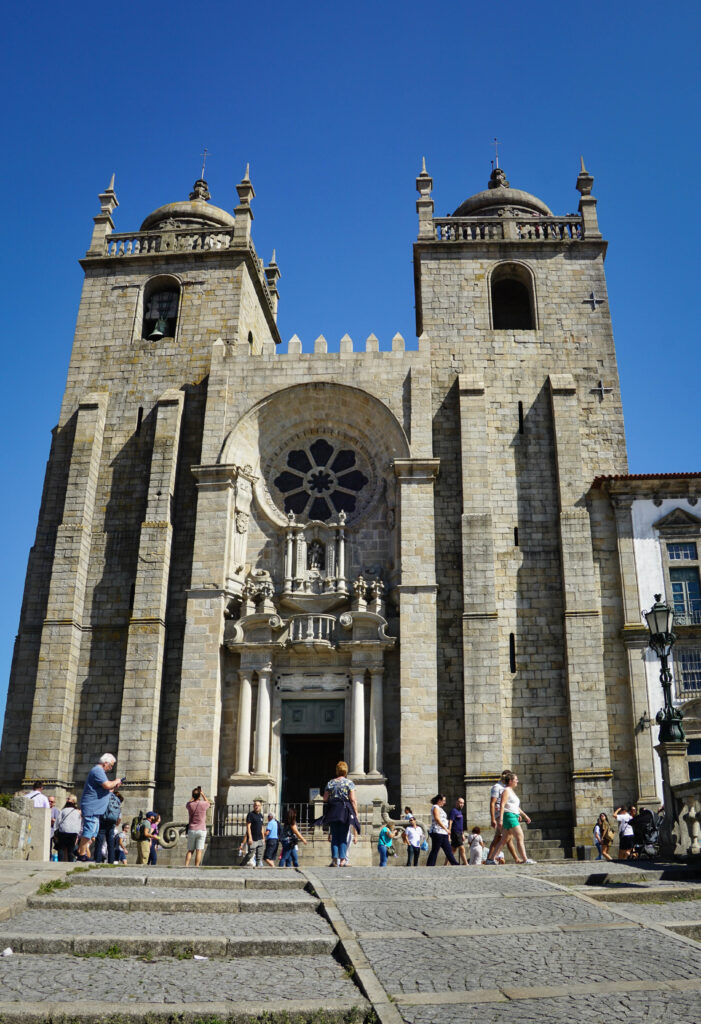
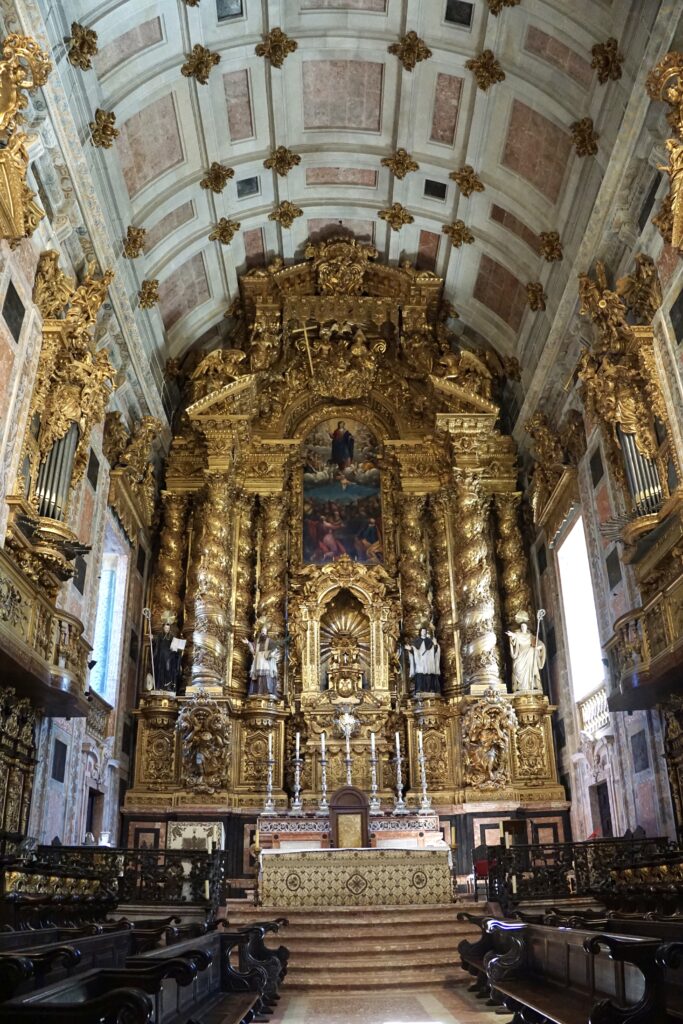
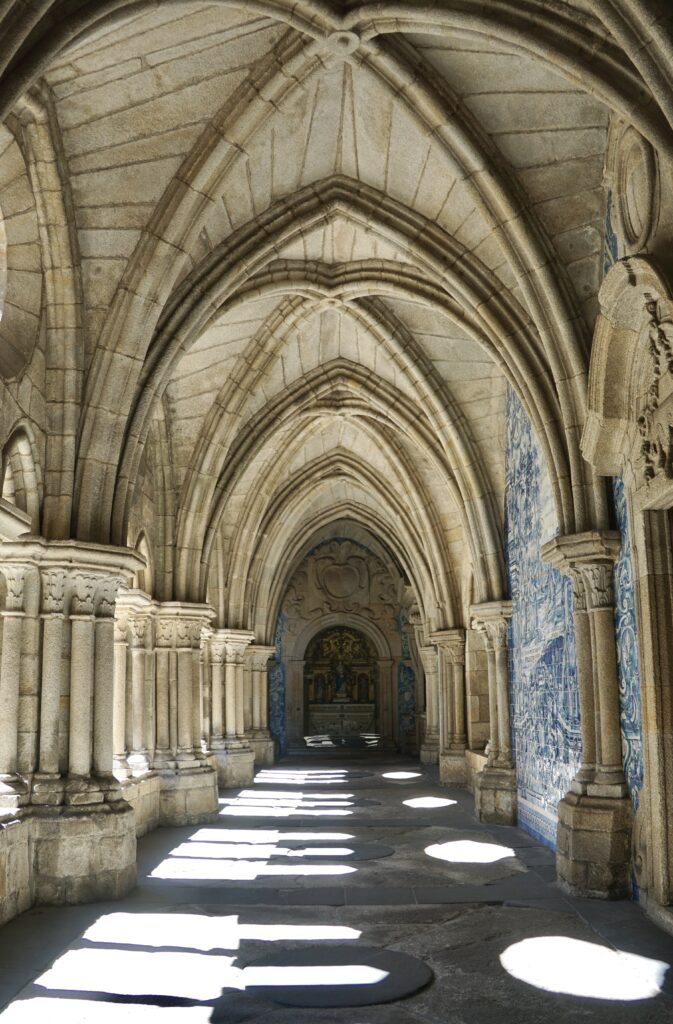
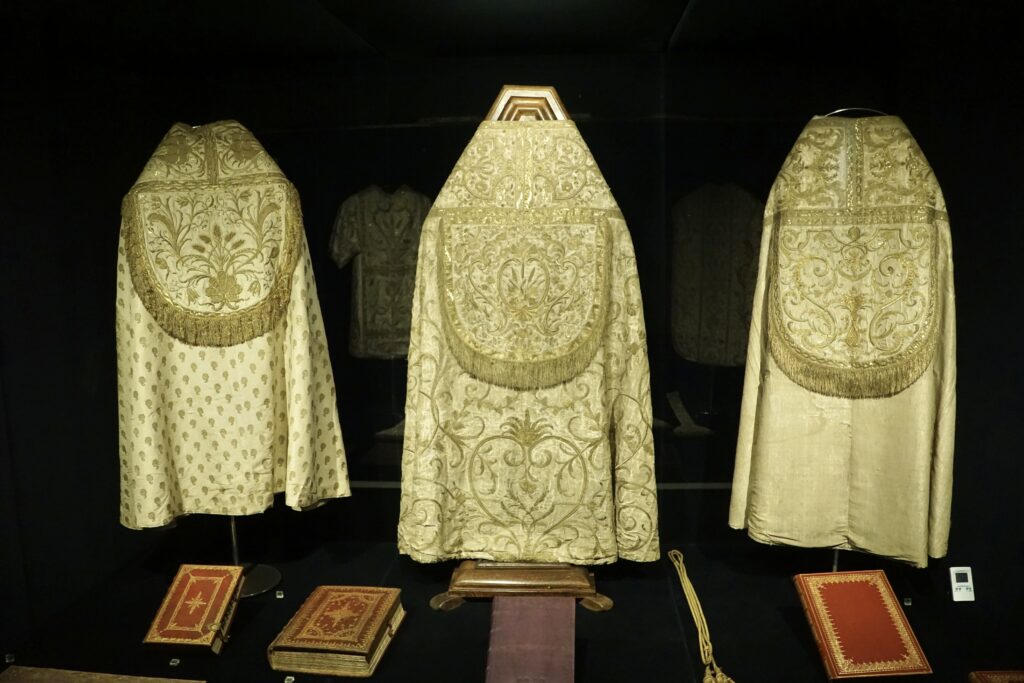
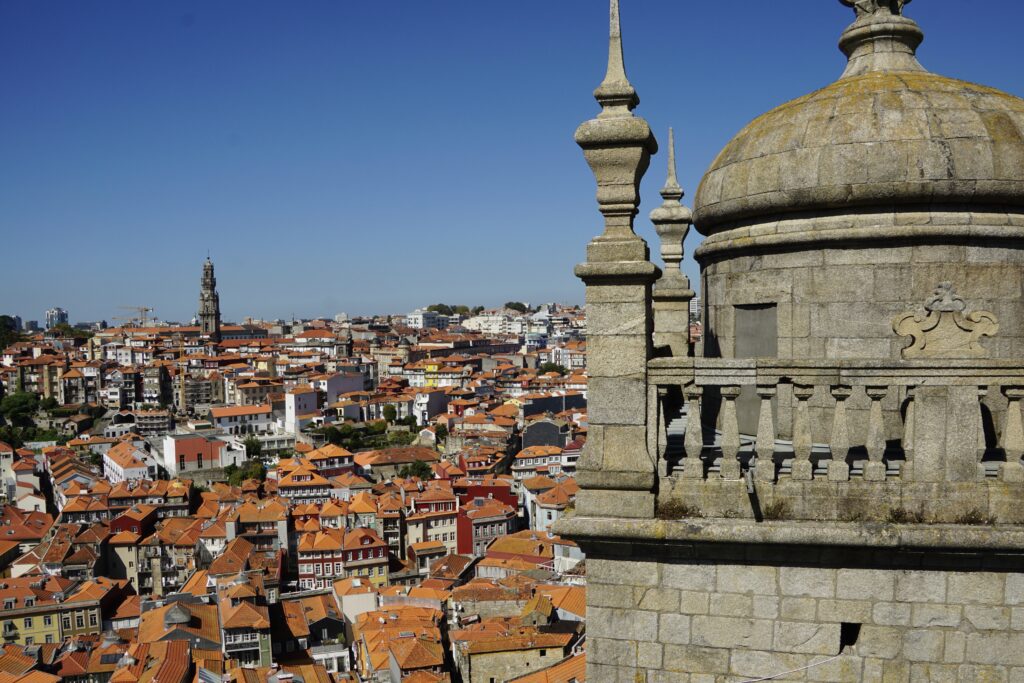
The Bishop’s Palace was where the bishops of Porto use to live. It really is as large and grand as a royal palace. You enter into a beautiful large room of stairs up to the 2nd floor. Stone carved ropes decorate the sides of the stairway. Above you, a skylight is surrounded by gorgeous pastel artwork. Windows throughout the palace offer awesome views over Porto. Giant rooms with molded ceilings and decorative doors fill the palace. The most interesting room was the dining room. The intricacy of the silverware and serving dishes was beyond belief.
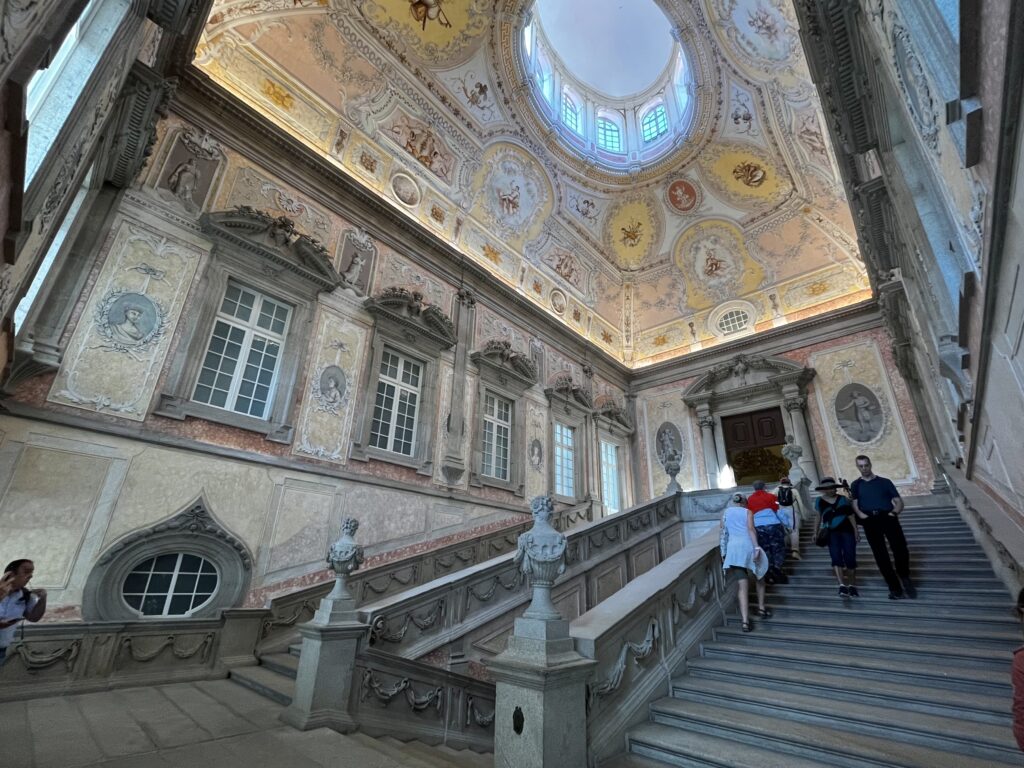
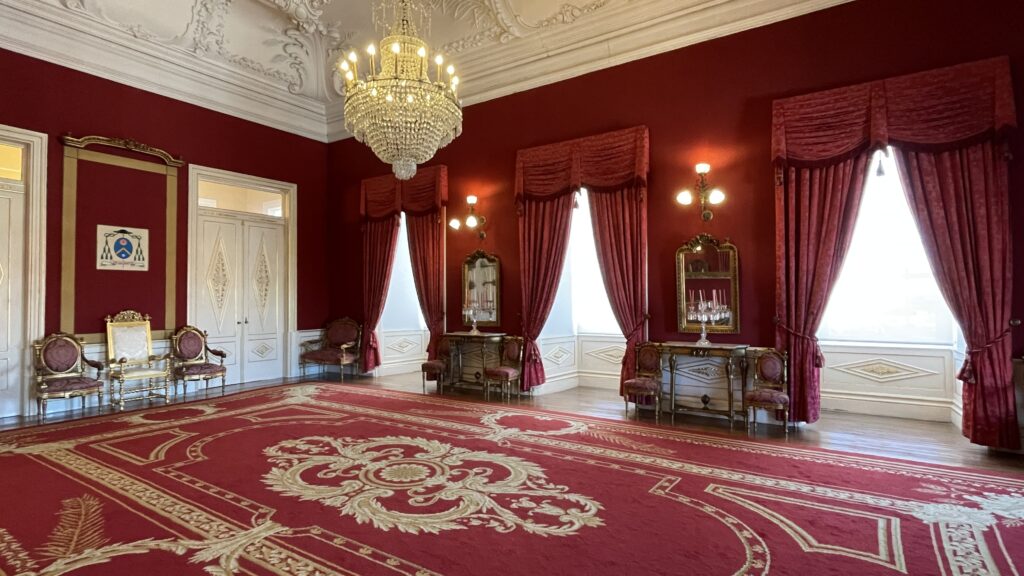
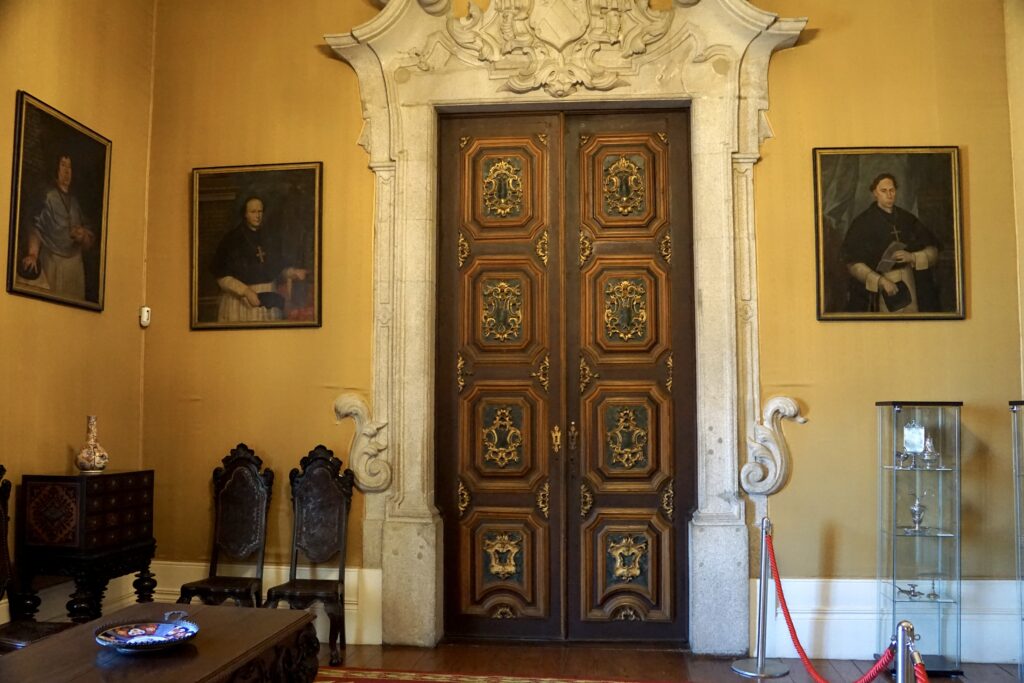
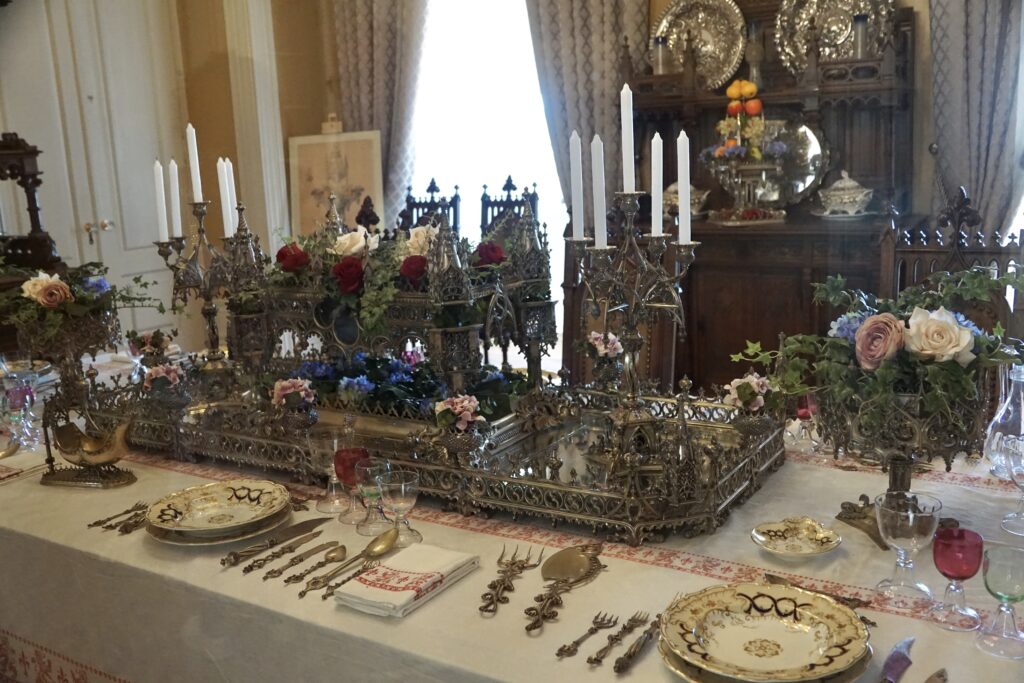
Beyond Churches:
Mercado do Bolhão is a market selling flowers, fruits and vegetables, olive oil, dried fruits, meat, sweets, and even serves wine by the glass to enjoy as you check it out.
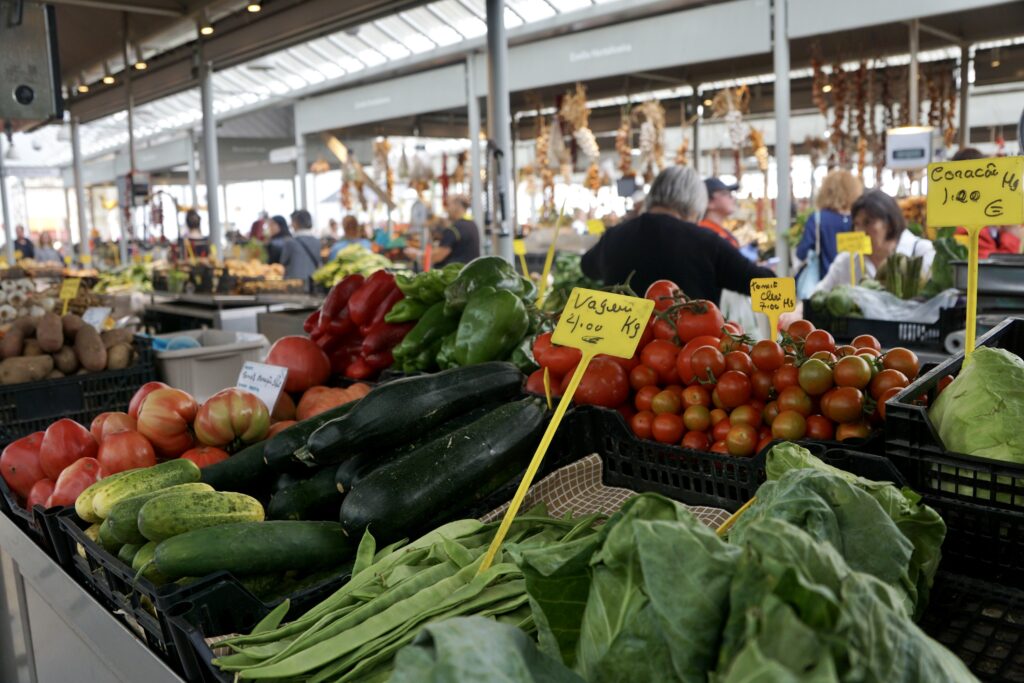
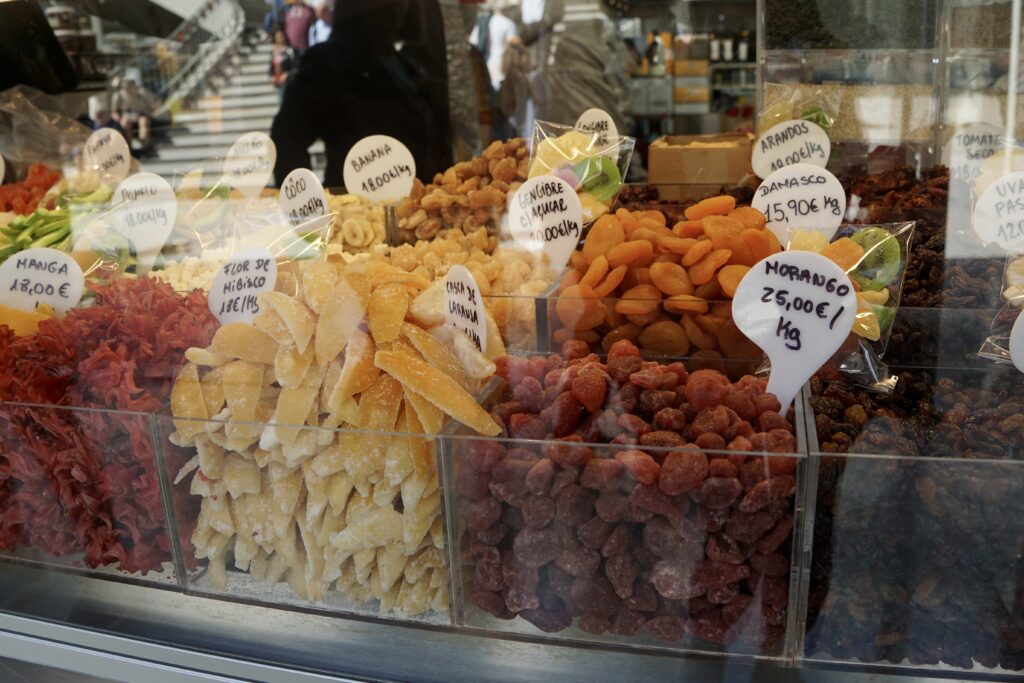
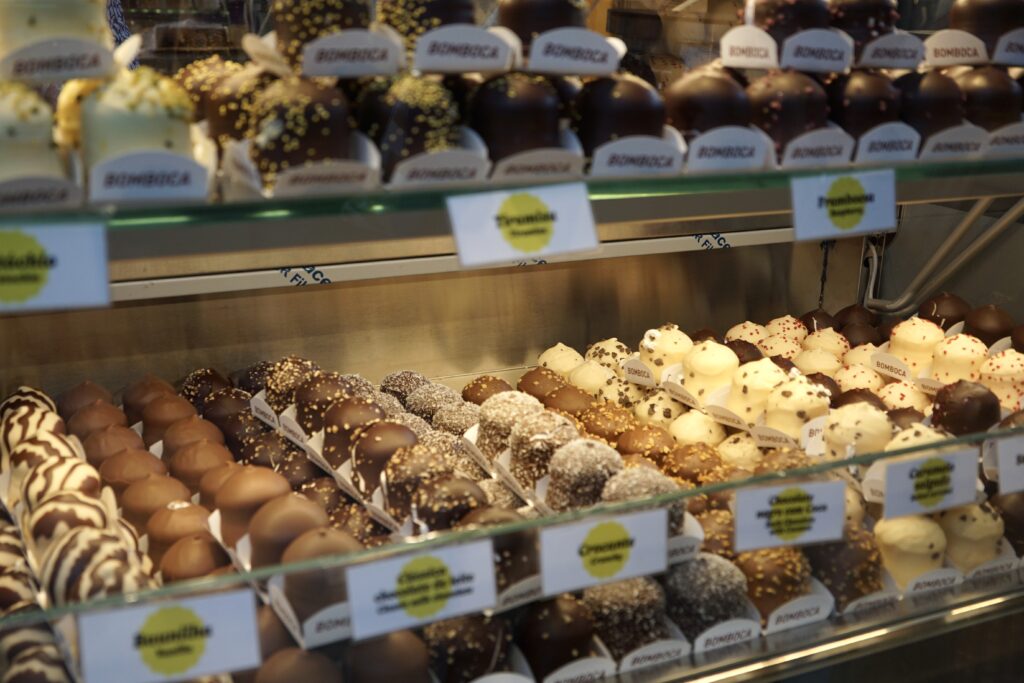
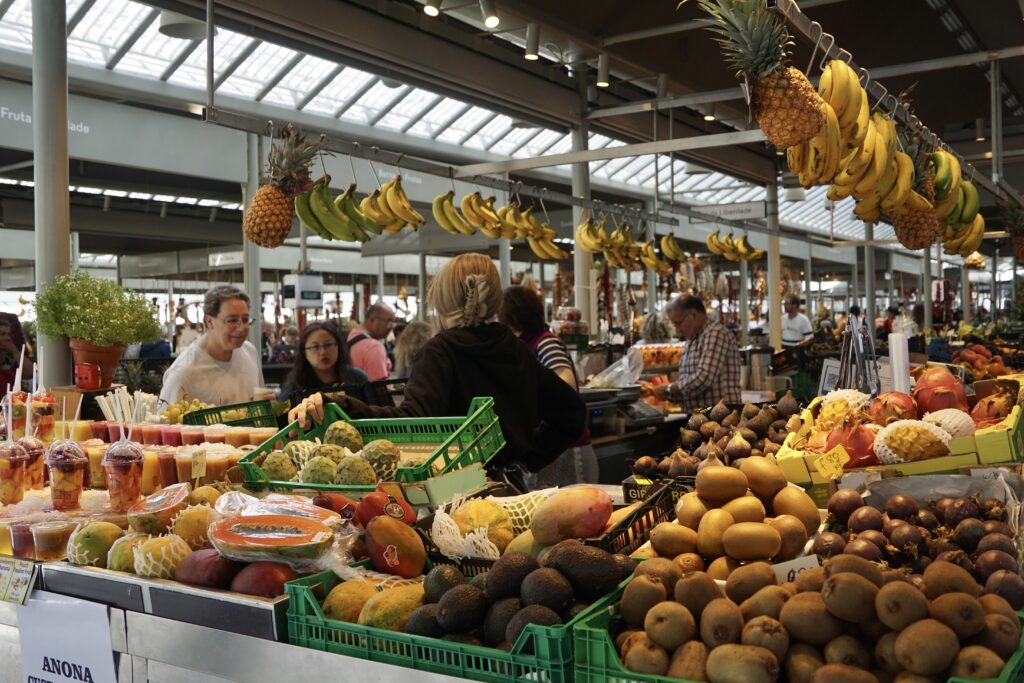
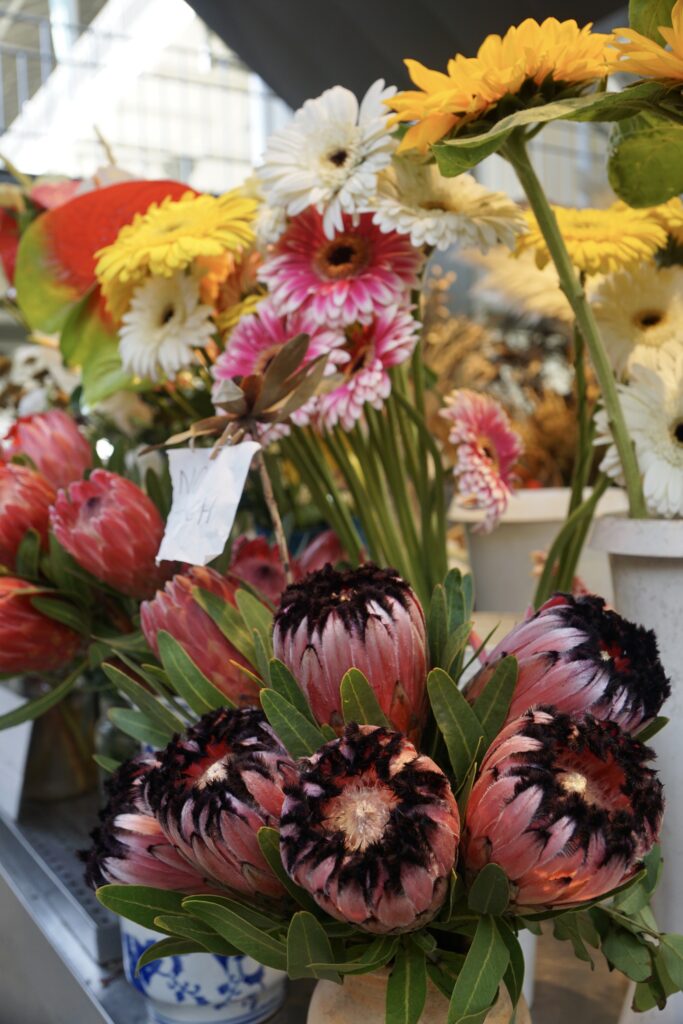
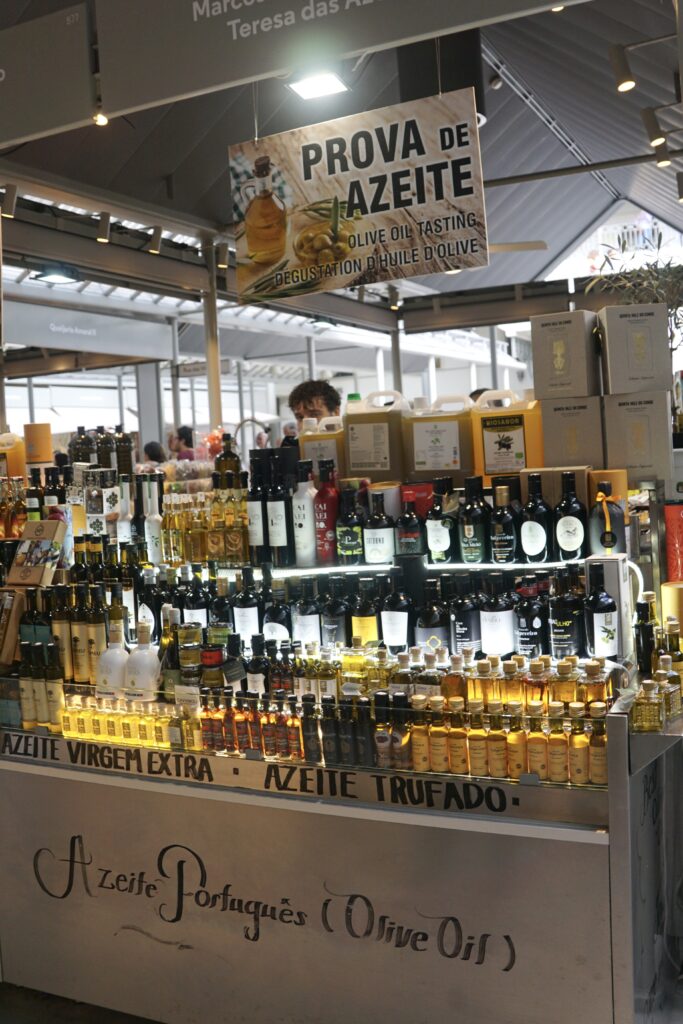
The São Bento Train Station is also worth a visit, even if you aren’t catching a train. The entrance walls are covered in blue and white tile murals depicting Portuguese history scenes. Natural light from the large arched windows illuminates the murals.
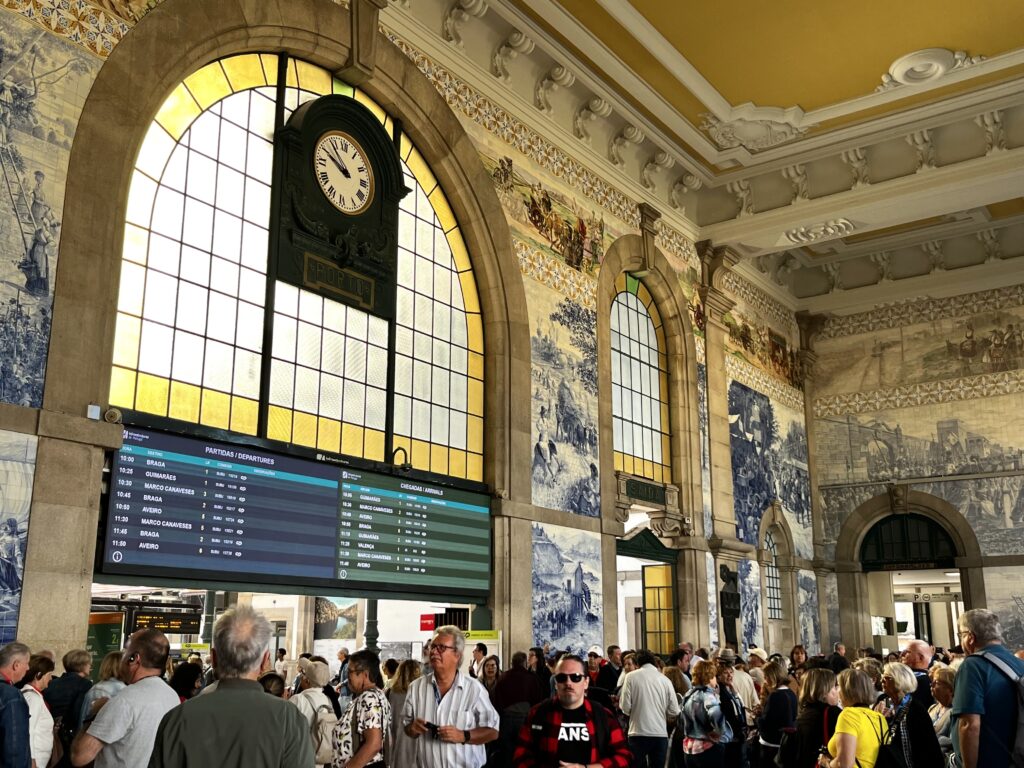
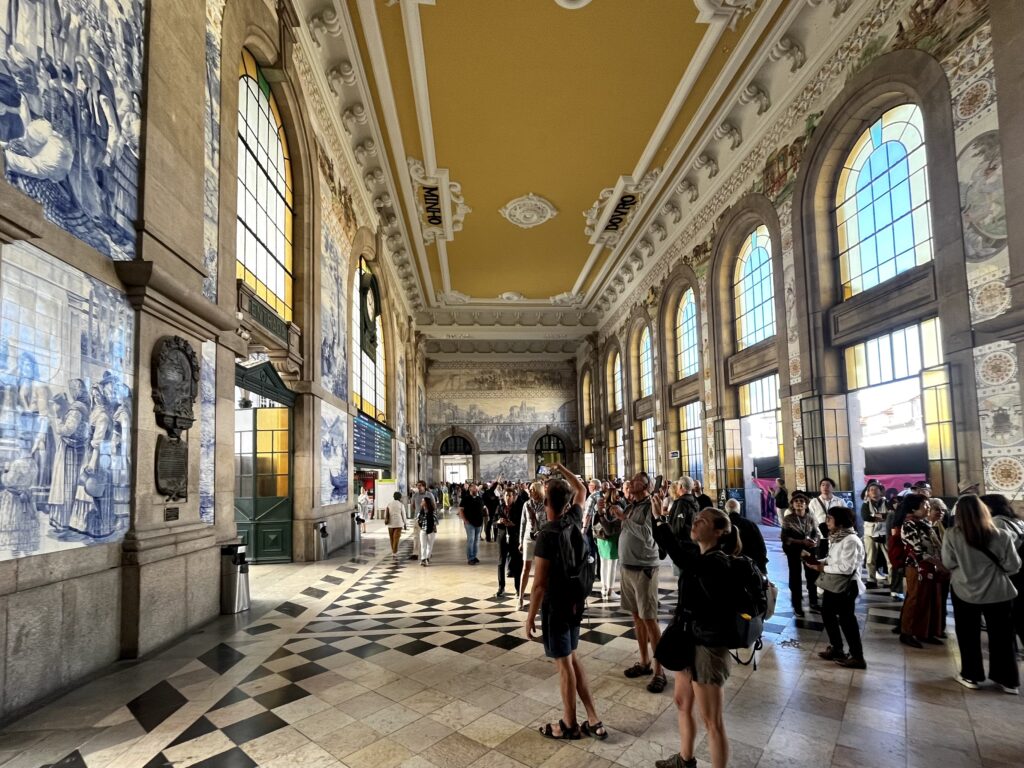
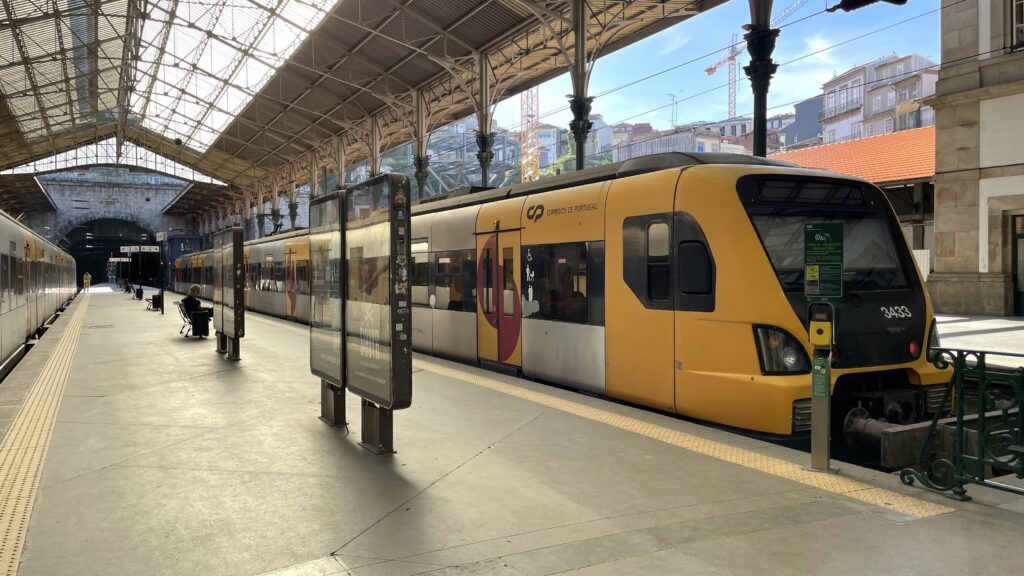
While we didn’t go inside the Clérigos Church and Tower, we did see it from the street. We even got to watch some freshman students in their traditional black capes singing and chanting by the university nearby. This is a common tradition during the first month or so of the school year. The Clérigos Tower is known as a great spot for a panorama of the city, but we already had a great view from the Porto Cathedral.
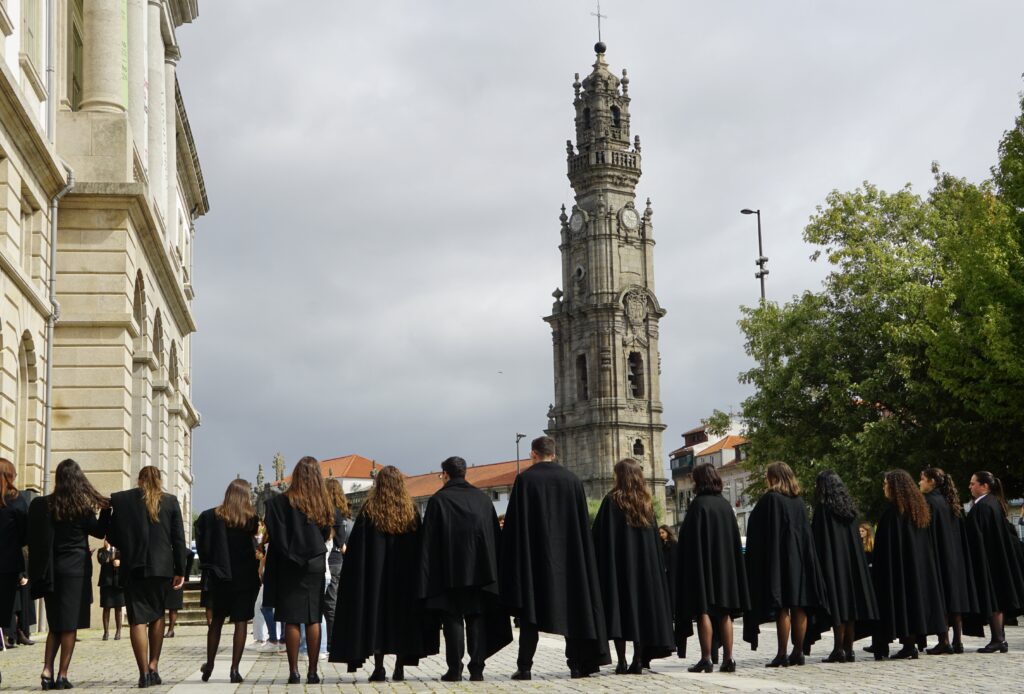
Take a Boat cruise under the 6 Bridges on the Douro River:
A great view of Porto is from a 6 bridges river cruise. The boat travels a few miles along the river to see all the bridges. The most famous is the Bridge of Luis 1 which has 2 levels. The bottom level connects the riverfront of Porto to that of Villa Nova de Gaia. The upper level connects near the Porto Cathedral to the monastery up on the hill on Villa Nova de Gaia. Pedestrians can walk across on either level of the bridge. The metro train crosses the top and vehicles can only drive across on the bottom.
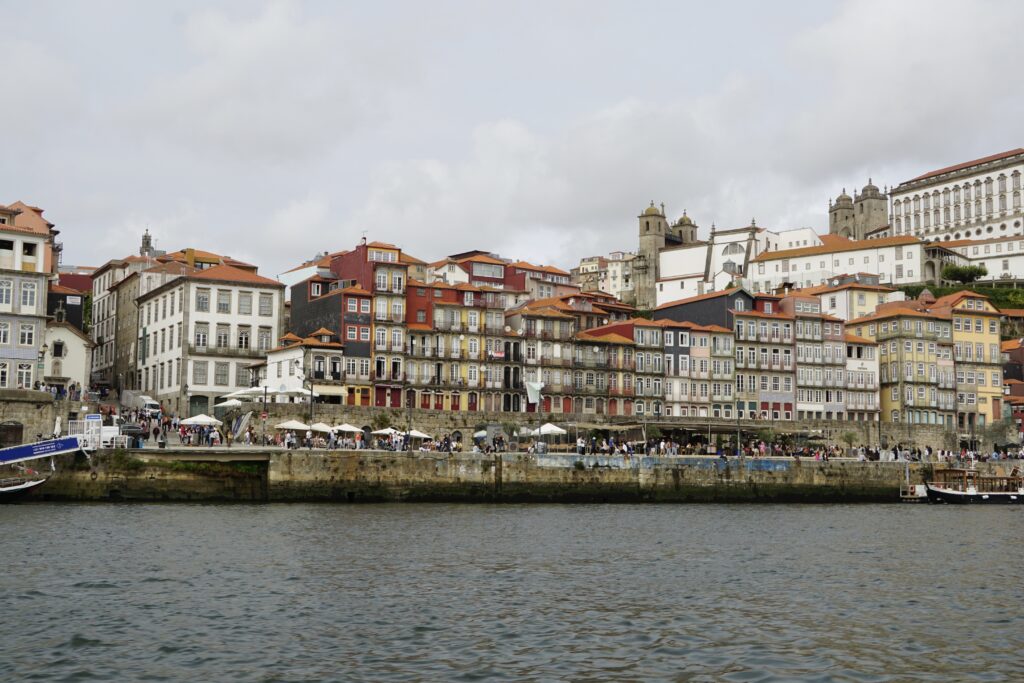
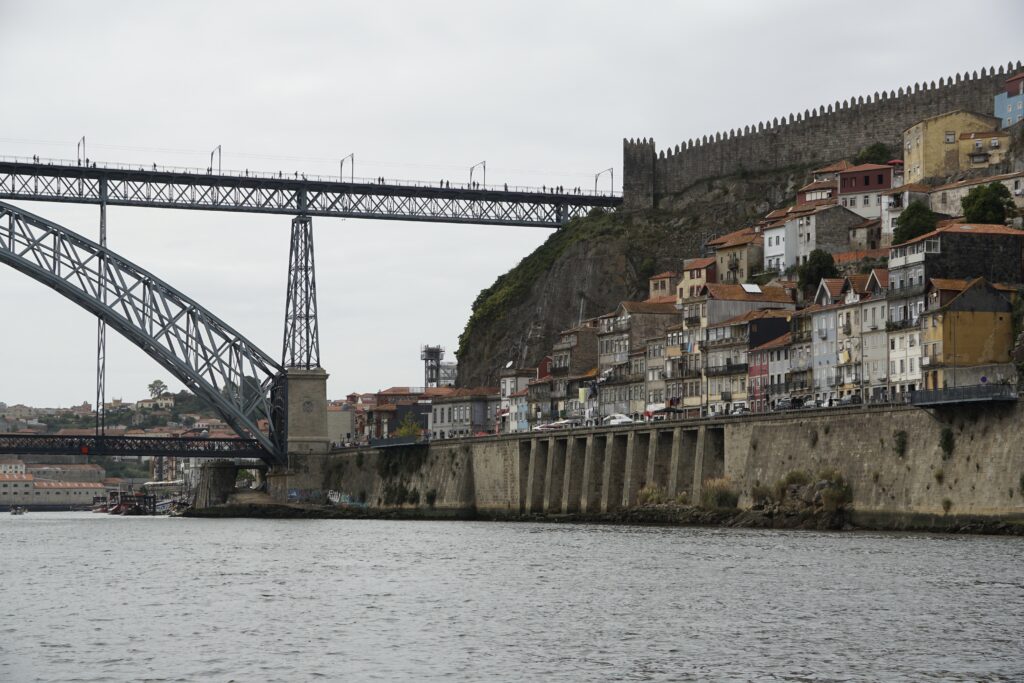
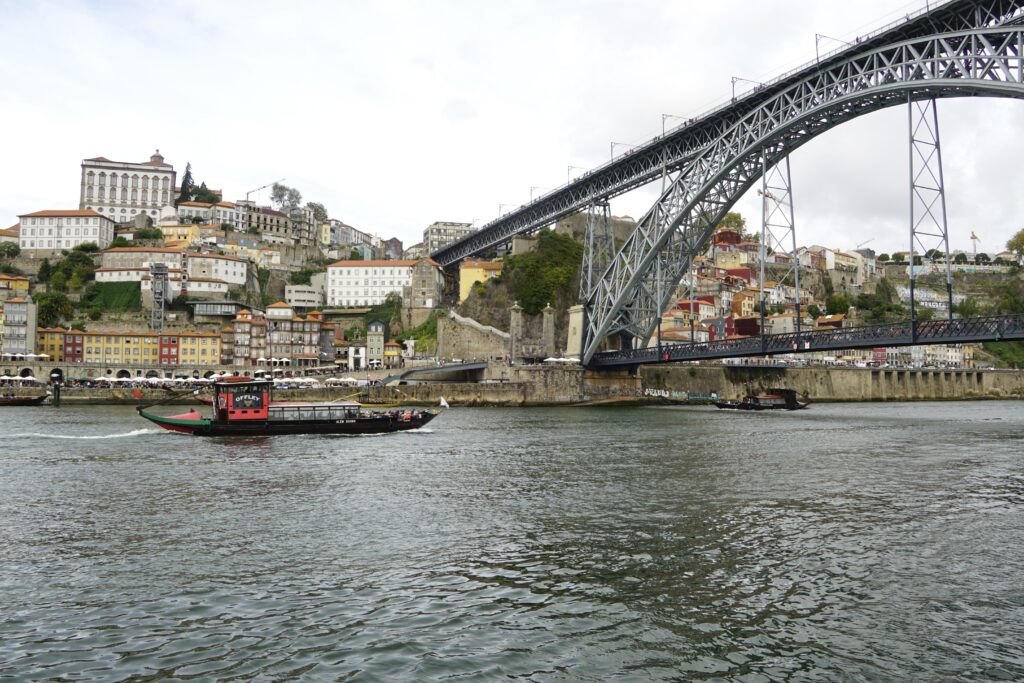
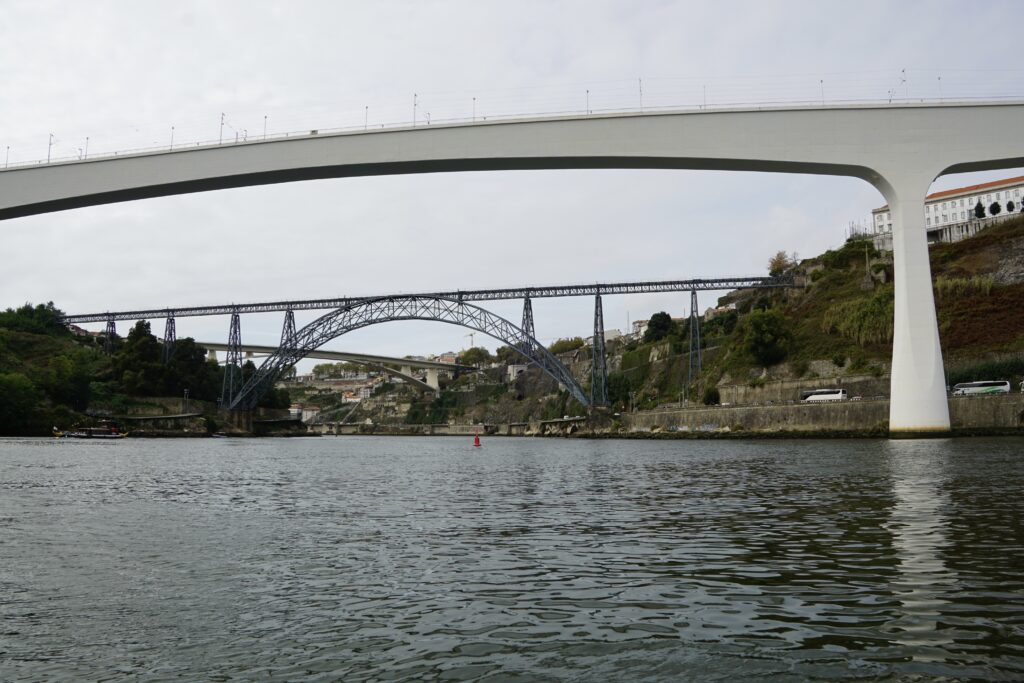
Vila Nova de Gaia
On the other side of the Douro River is the city Vila Nova de Gaia. This is the place to go port wine tasting. Most port wine is matured here as this used to be a requirement to be called port, though not anymore. Just a short walk across the Dom Luis I Bridge and you are on a river front street lined with port wine cellars, shops, and restaurants. It’s also a great spot to view the riverfront of Porto.
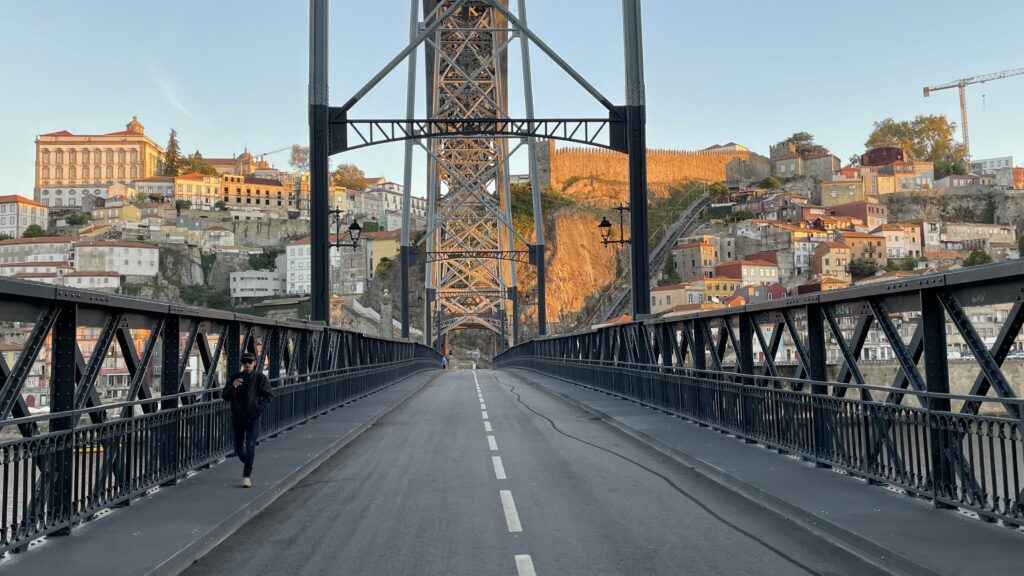
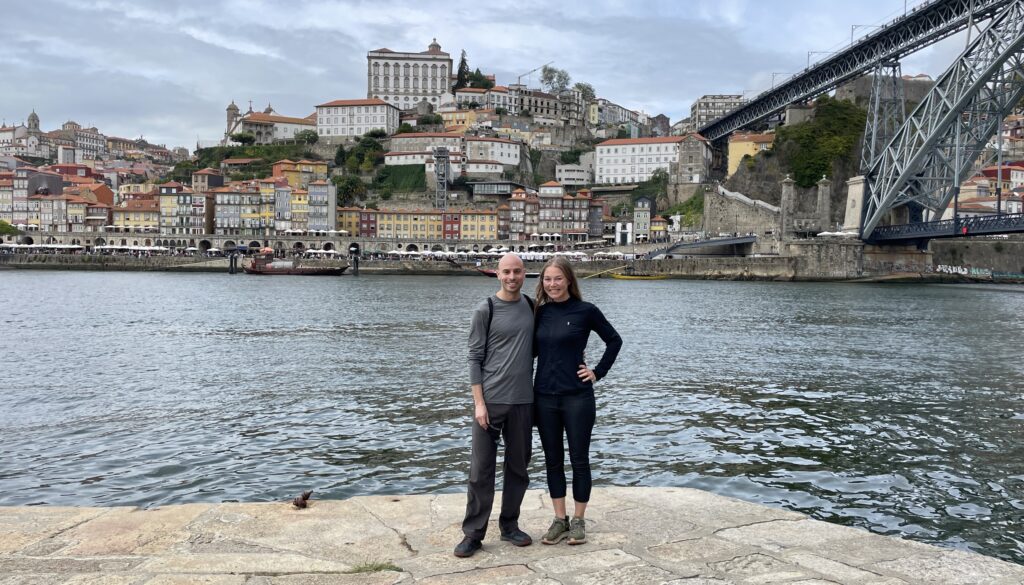
While checking out port cellars in Vila Nova de Gaia, we stumbled upon the “Half Rabbit” sculpture. It is a sculpture made of recycled materials and trash collected in the city, commenting on society’s wastefulness and the consequences for the natural environment.
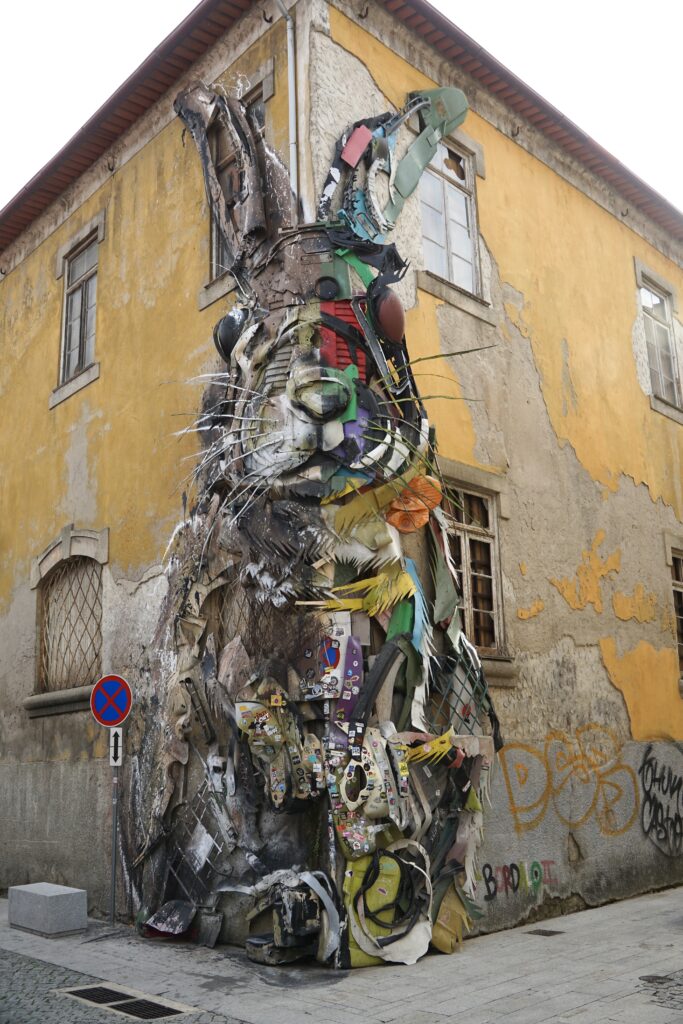
We also watched sunset from Jardim do Morro, the small park on the hill near the top level of the Dom Luis 1 Bridge on the Vila Nova de Gaia side. It’s extremely popular sunset spot, so expect to be surrounded by many young locals and tourists. Don’t miss the food trucks just beyond the hill.
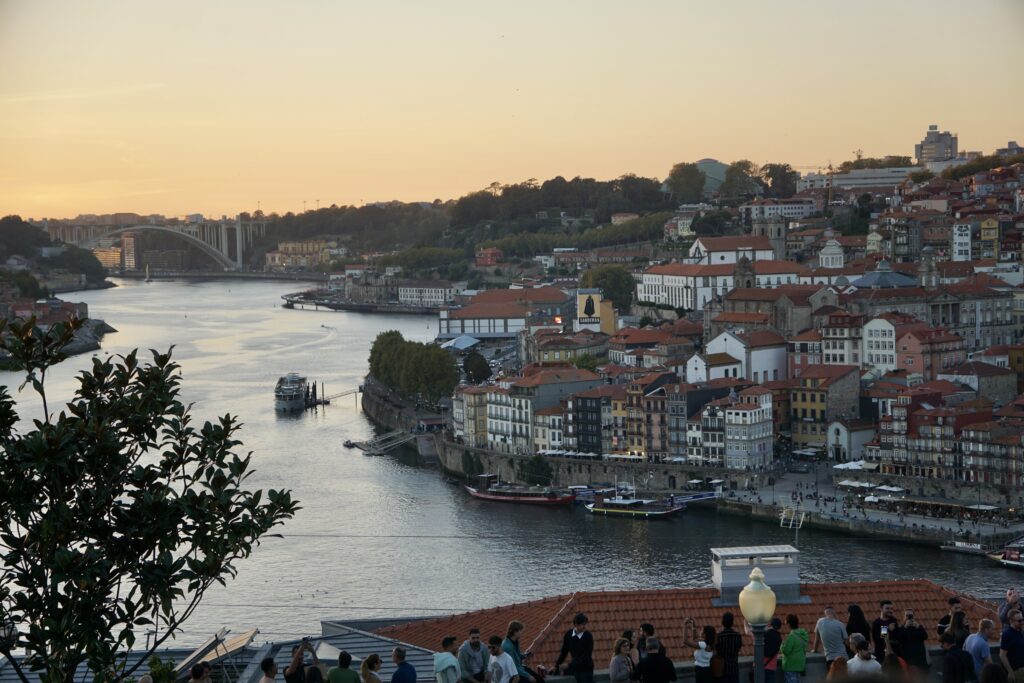
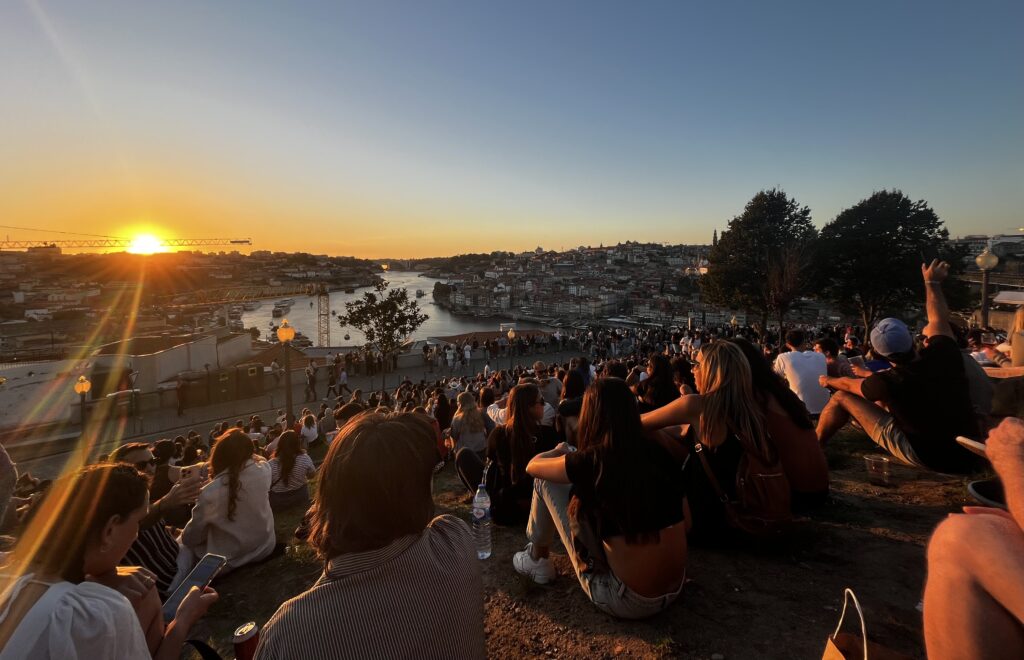
Now a little about what port is and our tasting experiences….
What is Port?
Port is a sweet wine fortified with a neutral grape spirit and often considered a dessert wine. It is grown and processed in the Douro Valley, a wine region east of Porto. In the 17th century, spirits were added to the wine to stop fermentation and preserve it for transport to England, which led to the creation of the fortified wine called port. The wine cellars in Villa Nova de Gaia are where the port ages in barrels. The wine used to travel along the Douro River in the boats that are still on display on the edge of the river in Villa Nova de Gaia.
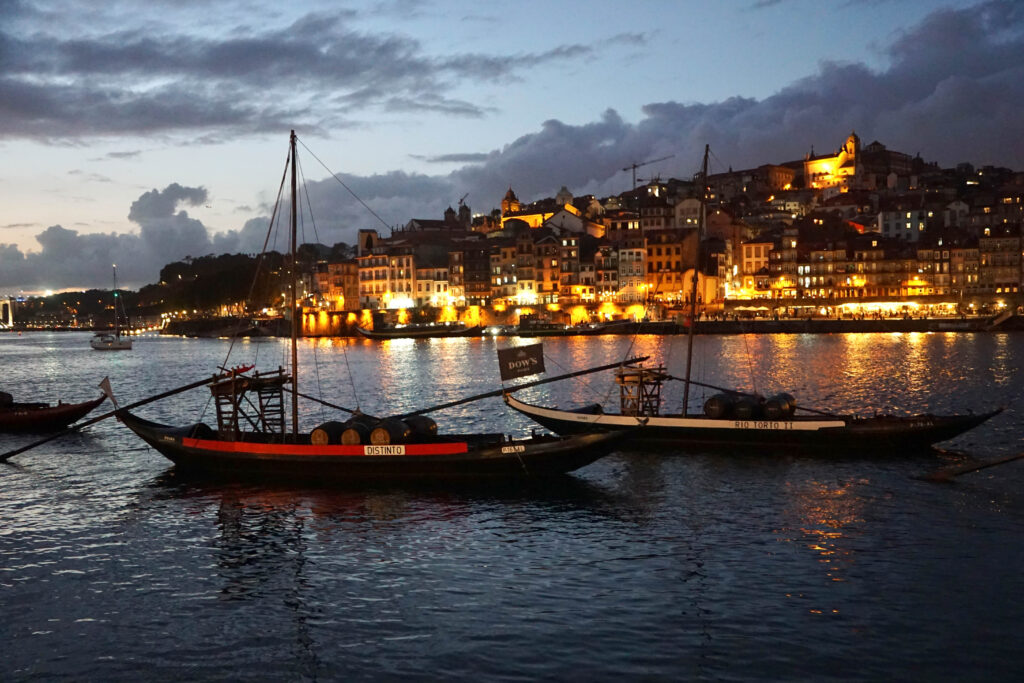
Styles of Port:
White port is from white grapes and can be found in dry, off-dry and sweet.
Rosé Port is the color of rosé wine. It has minimal exposure to the skin of the grapes. We didn’t see rosé ports listed much, but did try one on our first tasting.
Ruby port is ruby in color, and the most common. It’s stored in stainless steel tanks, minimizing contact with oxygen and preserving its ruby-red color and fruitiness.
Tawny Port is aged in wooden barrels. The wood allows permeation of oxygen. The contact with oxygen leads to oxidation and evaporation. The port becomes a tawny color and develops a nutty flavor due to oxidation and increases viscosity due to the evaporation.
Visit a Port Wine Cellar:
Villa Nova de Gaia has a lot of different port wine cellars. We had the chance to try four of them.
For our first port tasting, we visited Quevedo. We chose their classic tasting, which included 4 ports for 10 euros: a white, a rosé, a ruby, and a tawny. The server provided a brief description of each and left us on our own to enjoy them. The white was sweet and fruity and the rosé had a bit of a chocolate aftertaste. The ruby was my favorite, full bodied and not too sweet. And the tawny was similar to the ruby but was aged in small oak barrels and thus had an oaky flavor.
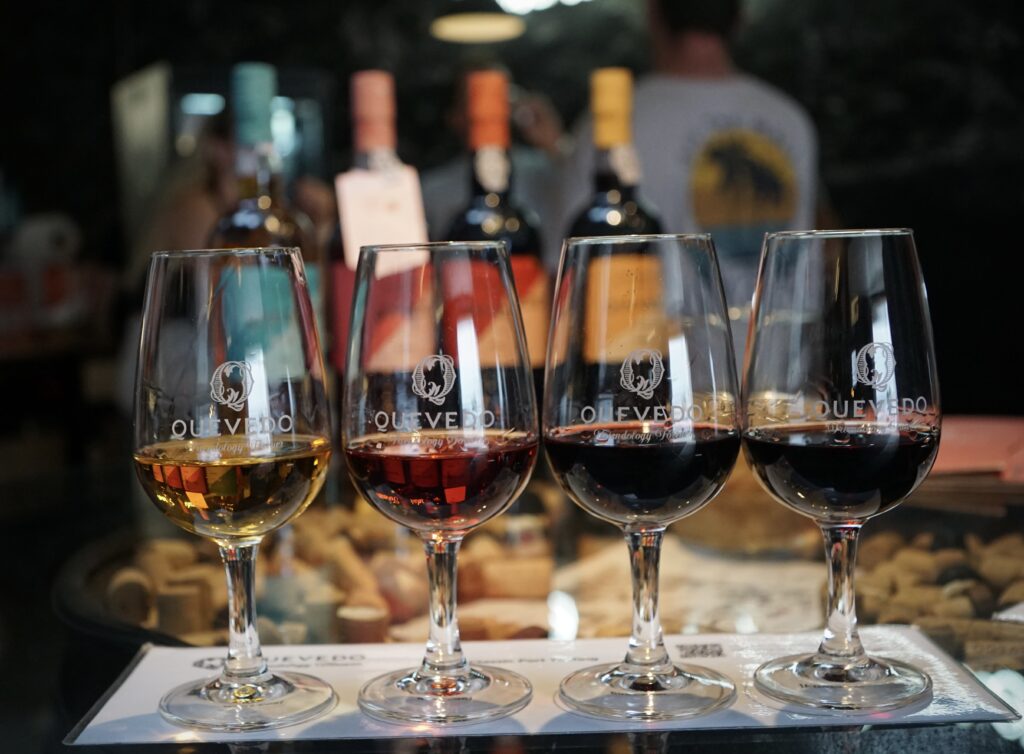
Quinta do Noval was my favorite port cellar. The tasting we chose included a dry white, 3 rubies (including a late bottle vintage and a 20 year ruby), and a 20 year tawny. The dry white had light apple and pear notes, but personally I found it too strong an alcohol taste. All three rubies were delicious, but my favorite of the whole tasting was the 20 year tawny. While rather intense, it had a smooth lingering caramel flavor.
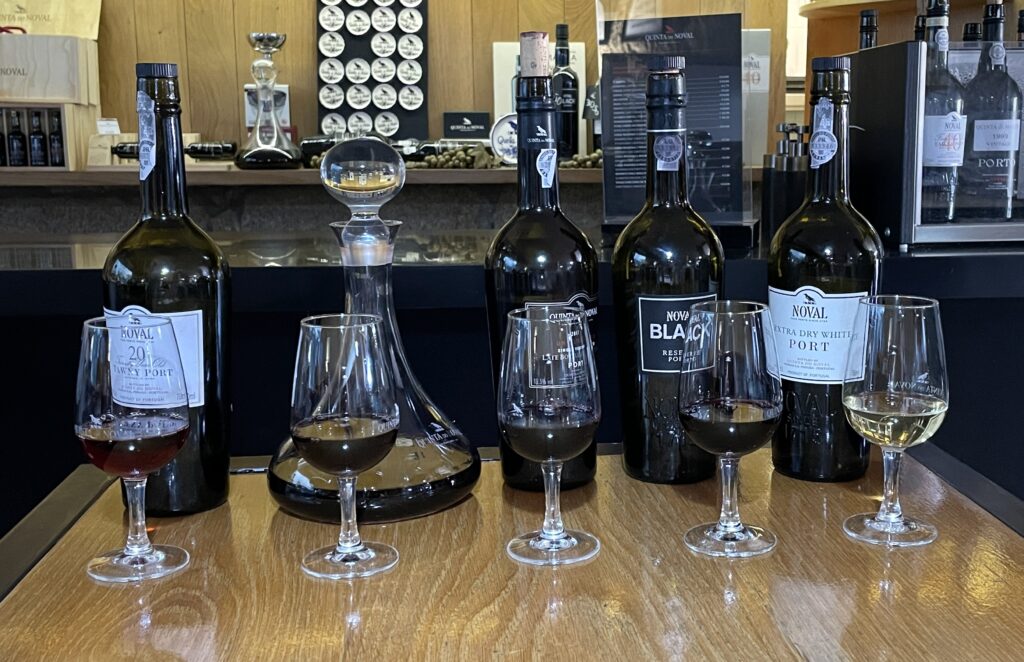
The last two port cellars we visited were actually owned by the same family: Quinta Dos Corvos and Porto Augusto’s. They were also very enjoyable.
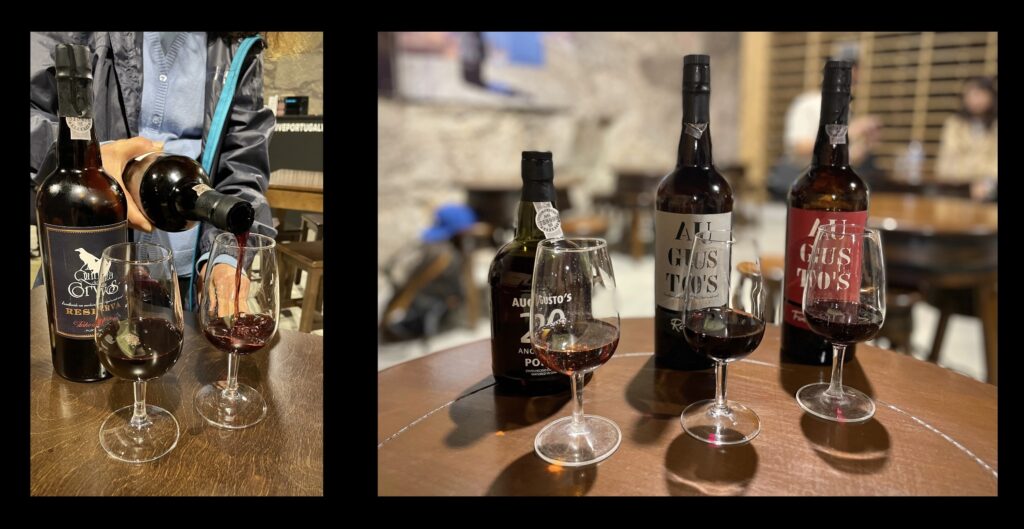
Food and Drinks in Porto:
The food of Portugal isn’t exactly vegan/vegetarian friendly, but we did manage to try some classic dishes made vegan.
Pastel de nata is a Portuguese egg custard tart pastry with the main ingredient being egg yolk. They are especially delicious with a dusting of cinnamon on top. A few places make a vegan version of these including a great diner named Pastelaria Tupi.
The Francesinha is a Porto special comprised of thick slices of bread with cheese and layers of assorted hot meats like ham and steak. The whole thing is covered in more cheese and a tomato and beer sauce called molho de francesinha and baked in the oven. The vegan version at Santa Francesinha had white bread, grilled tomatoes, portobello mushrooms, grilled onions, seitan steaks, vegan cheese, vegan sausage, soy chorizo, zucchini and vegan sauce. I really enjoyed it.
For beverages we of course tried the port wine described above. We also tried the vino verde. This “green wine” actually means “young wine” and is made in northern Portugal. It has lower alcohol and is very refreshing for a hot Portuguese afternoon.
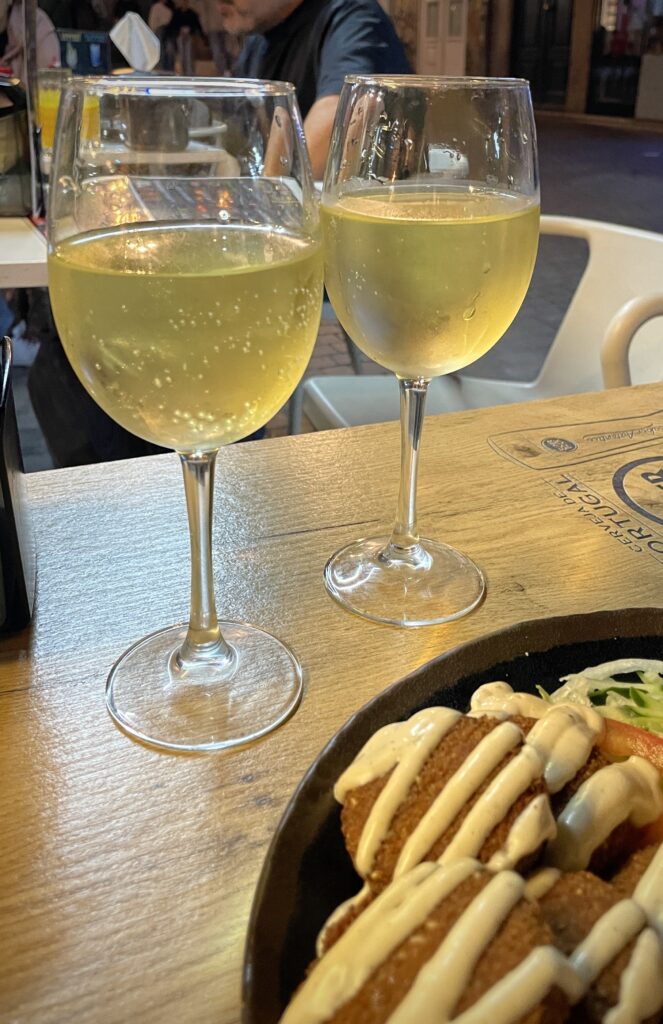
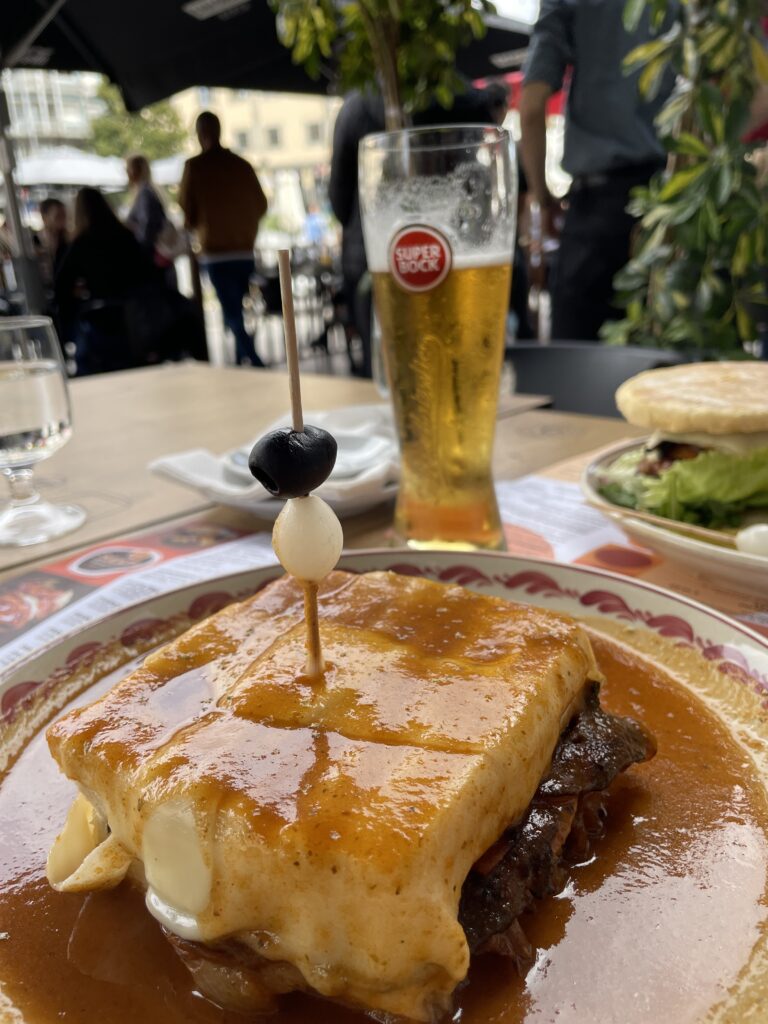
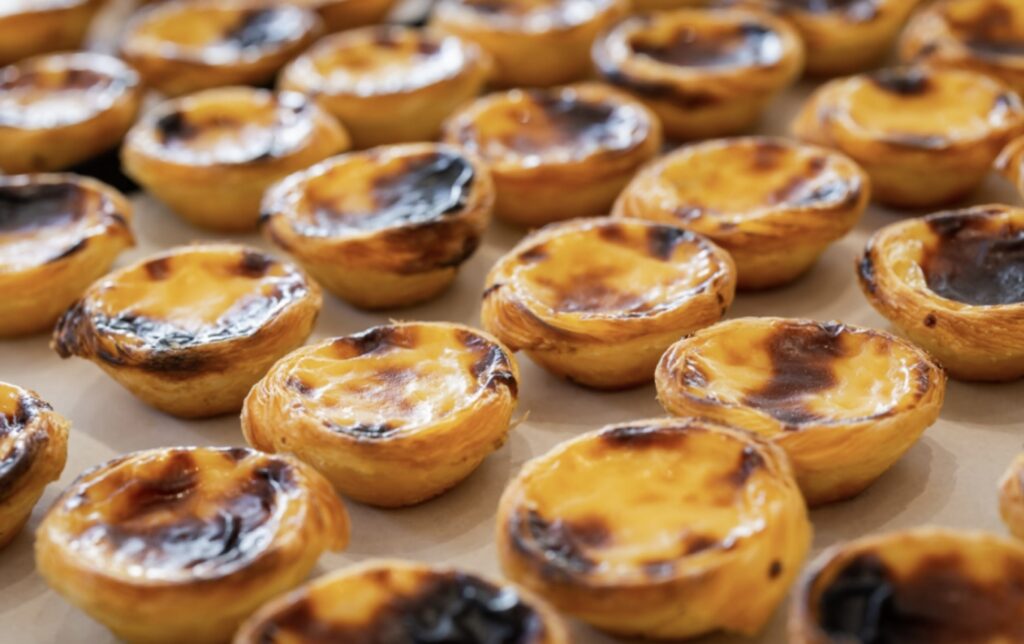
Book Recommendations:
If you are planning a trip to Portugal, I have two book recommendations. First is “The Portuguese: A Modern History” by Barry Hatton. It’s a good history lesson on the region. After getting a sense of Portugal’s past, I suggest reading “Distance Music” by Lee Langley. This work of fiction is a love story that takes place over 6 centuries and each story is set in a unique time period in various areas of Portugal.
Leave a Reply